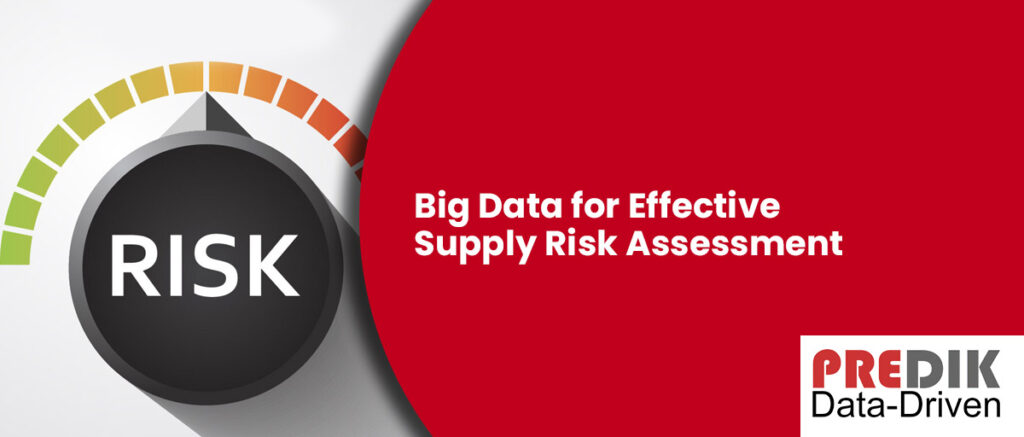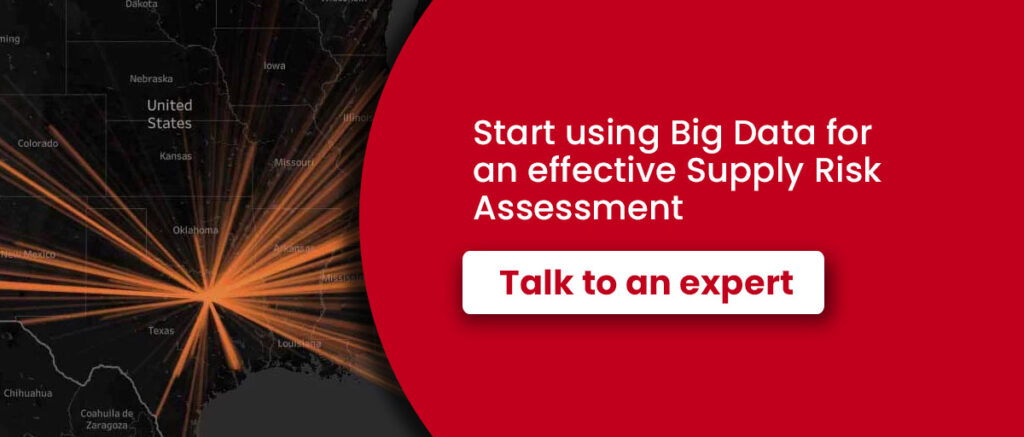A supply risk assessment process identifies and manages potential risks within a supply chain.
Supply risk assessment is essential because it helps businesses anticipate and prepare for potential disruptions. As you know, in today’s globalized world, a minor hiccup in one region can ripple across the entire supply chain. This can cause significant operational and financial damage for your operation.
Current Challenges in Supply Risk Assessment
Despite its importance, supply risk assessment is fraught with challenges. Traditional risk assessment methods struggle to capture the complexity and dynamism of modern supply chains.
Moreover, regulatory requirements, credit risks, and the need for enhanced due diligence add further complexity to any risk assessment process.
The Role of Big Data in Supply Chain Management
Big Data refers to large data sets that are too complex to be managed and processed by traditional data-processing software.
When using data analytics and Machine Learning techniques, these data sets can reveal patterns, trends, and insights to drive accurate decisions.
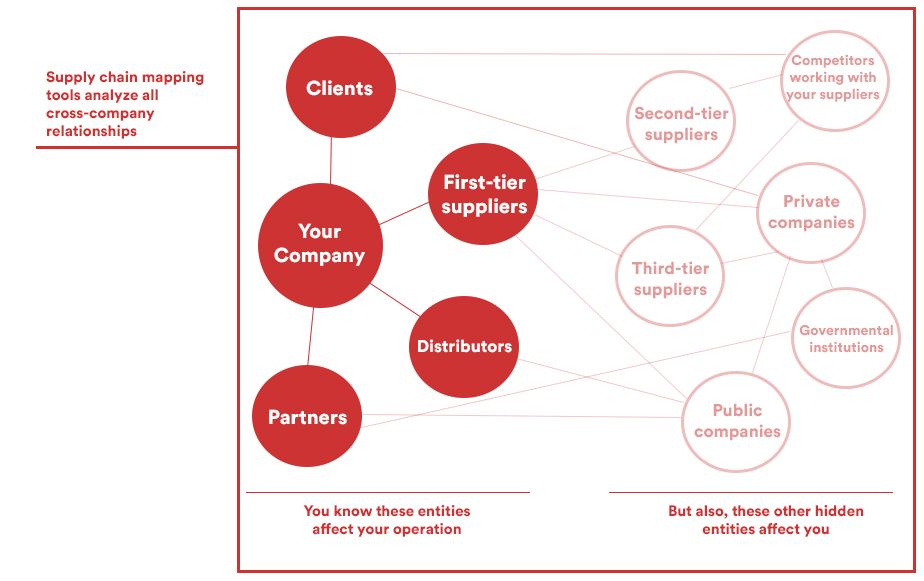
We recommend you reading our complete guide: Big Data and its impact on Supply Chain Management
Importance of Big Data for Risk Assessment in Supply Chain Management
Big Data has transformed Supply Chain Management by providing insights into potential risks. Also, it improves supplier analysis, and facilitates real-time risk assessment.
Furthermore, Big Data helps businesses understand their level of risk and implement effective mitigation strategies.
Risk analytics enables businesses to monitor their operation in real-time, identify potential bottlenecks, and respond to disruptions quickly.
For example, a company can monitor weather patterns by using data analytics. This helps strategic teams to anticipate and mitigate the risk of supply chain disruption due to a natural disaster.
Real-Time Risk Assessment: A Paradigm Shift
Real-time risk assessment, enabled by Big Data, has become a game-changer in supply chain management. It allows businesses to identify and address potential risks as they emerge (Rather than taking action after they’ve already caused damage). This can significantly reduce the “consecuences” caused by supply chain disruptions and even prevent them entirely.

Big Data for Real-Time Risk Assessment
By integrating Big Data, data science and Machine Learning, risk assessment analytics provides continuous insights into supply chain health.
This real-time analysis can highlight emerging issues and suggest corrective actions. It allows decision-makers to manage issues proactively and maintain uninterrupted operations.
How Big Data Enhances Supplier Risk Management?
Big Data analytics can help companies perform comprehensive supplier risk assessments by providing:
- Insights into supplier performance.
- More control over external factors.
- Compliance with regulatory requirements.
Also, these insights are helpful when deciding which suppliers to work with and how to manage those relationships effectively.
Case Study: Successful Implementation of Big Data in Supplier Risk Management
A case in point is Moody’s, which uses big data to assess supplier risk. By analyzing a wide range of data, including financial data, credit risks, and regulatory information, Moody’s can accurately assess the risk associated with each supplier and make informed decisions accordingly.
A Look at Supply Chain Risk Management Tools
As we have mentioned, supply chain tools that use Big Data analytics provide comprehensive risk assessments, helping companies identify and mitigate possible threats.
Choosing the right tool for your business involves considering your specific needs and the size and complexity of your supply chain.
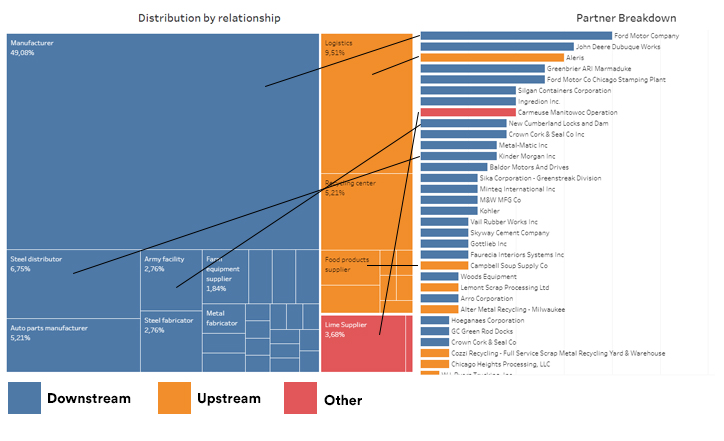
Also, you must consider the tool’s ability to integrate with your existing systems. A tool/system that leverages Big Data effectively can significantly enhance your supply risk assessment capabilities.
Risk Scoring in Supply Chain: The Big Data Impact
Risk scoring in supply chain management involves quantifying the potential threats associated with a supplier or a set of suppliers. It is a crucial component of supplier risk management, allowing businesses to prioritize scenarios and allocate resources effectively.
You may also be interested in reading: Supply chain mapping tools: How can companies benefit from them?
How Big Data Improves Risk Scoring?
Big Data improves risk scoring by providing a comprehensive view of each supplier. It allows businesses to consider a wide range of factors, including:
- Financial stability.
- Regulatory compliance.
- Performance history.
As a result, companies can get a more accurate and complete understanding of a supplier profile.
Case Study: Risk Scoring Transformation with Big Data
An important logistic provider with a 30 million product movement yearly has successfully leveraged Big Data to transform its risk-scoring process.
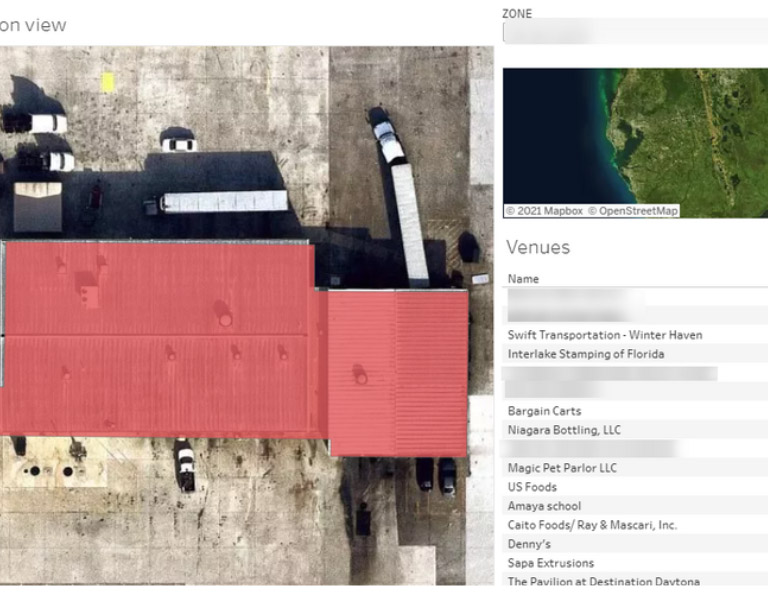
Analyzing a wide array of data points in real-time, the company has created a dynamic risk score that accurately reflects the current risk level of each supplier to avoid partnerships with companies related to illegal activities.
AI and Big Data: A Powerful Combination for Supply Chain Risk Assessment
Role of AI in Supply Chain Risk Assessment
Artificial Intelligence (AI) is crucial in supply chain risk assessment. AI tools can process and analyze large volumes of data quickly and accurately.
Artificial Intelligence solutions can identify patterns and trends that human analysts might miss, providing deeper insights into potentially risky situations.
AI + Big Data: The impact for companies
Combined, AI and Big Data have proven to transform supply chain risk assessment.
AI algorithms can sift through vast data, identify risk factors, and predict potential disruptions. The AI-Big Data duo allows businesses to manage their supply chains proactively. They reduce the risk of conflicts and enhance overall performance as well.
Future Trends: Big Data and Supply Risk Assessment
Predictive Analytics in Supply Chain
Predictive analytics is one of the most promising future trends in supply chain risk assessment. By analyzing historical and current data, predictive analytics can forecast future events and trends.
Overall, predictive analytics enables businesses to anticipate and mitigate potential risks.
We recommend you reading: What is Predictive Analytics? Understanding the Basics and Beyond (With Examples)
Big Data and Supply Chain Sustainability
Another trend to watch is supply chain sustainability.
By providing insights into areas such as energy use, waste production, and carbon emissions, Big Data can help businesses identify opportunities to make their supply chains more environmentally friendly.
The Road Ahead for Big Data in Supply Risk Assessment
The future of Big Data in supply risk assessment looks promising. As technology advances, we can expect to see even more sophisticated risk assessment strategies designed to keep supply chains running smoothly.
Steps to Implementing a Big Data Risk Management Strategy
Implementing a Big Data risk management strategy involves several steps.
First, you need to identify your key risk indicators. Then, collect and analyze relevant data, identify potential risks, and design and implement risk mitigation strategies.
Regular monitoring and updating of the risk assessment process are also crucial to keep pace with the dynamic nature of supply chains.
Key Considerations for a Data-Driven Approach
Key considerations for a data-driven approach include data protection and security assessments. Businesses must ensure that they comply with all relevant data protection regulations and that their data is secure from cyber threats.
Additionally, decision-makers must consider the quality and relevance of the data they use in their risk assessments.
Overcoming Challenges in Implementation
While implementing a data-driven risk management strategy can be challenging, the rewards are well worth the effort.
To tackle data-related obstacles, companies should consider investing in appropriate technology, collaborating with a professional Big Data analytics firm, and promoting a work culture prioritizing data-based decision-making.
Key Takeaways
Big data has revolutionized supply risk assessment, providing real-time insights into potential risks and enabling proactive risk management. By embracing big data, businesses can improve risk scoring, enhance supplier risk management, and create more resilient supply chains.
The Future of Supply Risk Assessment with Big Data
As technology continues to evolve, the role of Big Data in supply risk assessment will continue to gain importance.
Businesses that embrace data will be better prepared to manage their supply chain risks and succeed in an increasingly complex and dynamic business environment.
To sum up, Big Data is not just a buzzword but a powerful tool that can transform supply chain management.
In data-driven risk management, companies collect and analyze data from multiple sources and use it to preemptively identify, anticipate and mitigate problems in business operations. The use of Big Data, AI and machine learning helps companies decide what problems may arise in most business activities to devise solutions before they occur.

